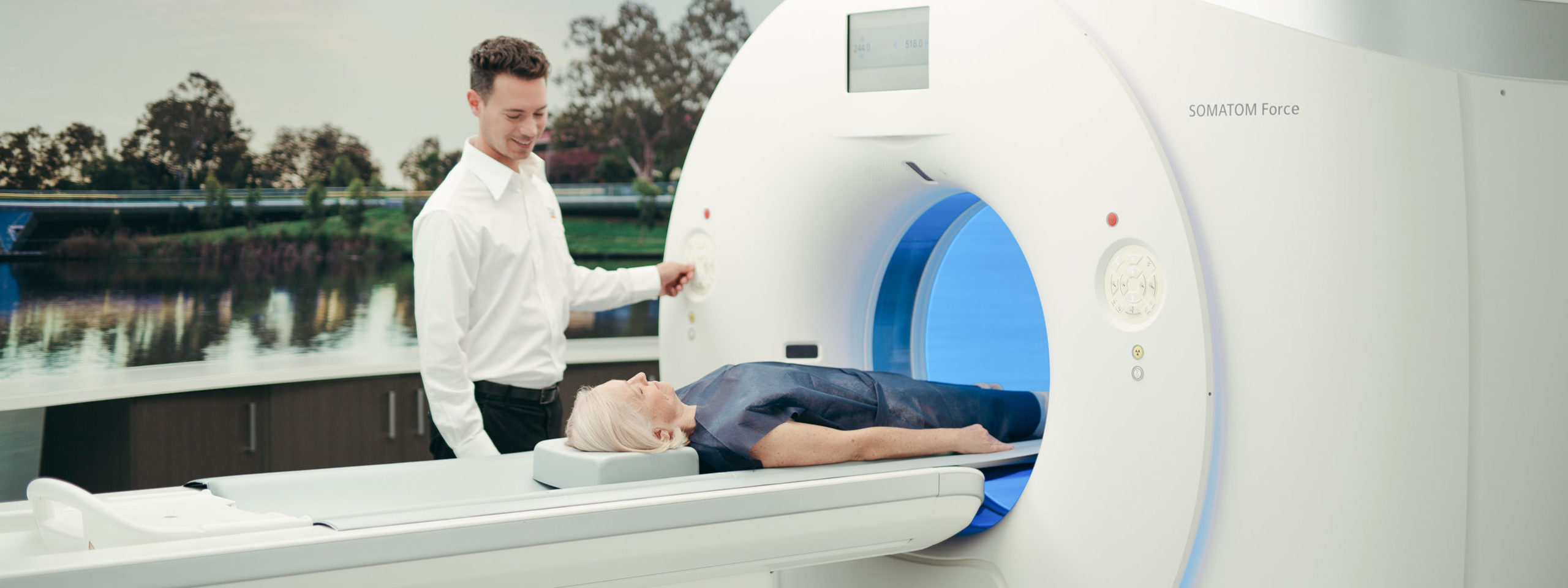Radio frequency neurotomy is a procedure used to alleviate pain caused by arthritis, neuroma, degeneration or following injury.
There are two types of radiofrequency treatment:
- Radiofrequency neurotomy creates heat to the nerves of 90°C to break down nerves (radiofrequency denervation). This treatment can provide lasting relief from 6 months to 2 years.
- Pulsed radiofrequency (neuromodulation) transfers heat to the nerves at a lower temperature of 40-45°C. It can provide long-lasting pain relief by disrupting the lining of nerves and inhibiting the pain signal.
Procedure
Radiofrequency ablation is performed by a radiologist experienced in interventional procedures. A diathermy pad is placed on the leg (shaving in that area of the leg may be required). After local anaesthesia, a radiofrequency ablation needle is inserted to the target nerve under imaging guidance (ultrasound or CT).
A thin probe is then passed through the needle, which is connected to a radiofrequency generator that results in heating of the probe tip. The procedure takes approximately 30 minutes, however you may be required to stay longer for observation.
Risks / Side Effects
Risks of interventional procedures are rare and include:
- Infection: Usually minor. Less than 0.1% can require intravenous antibiotics or hospital admission.
- Bleeding: Very rare. Increased risk for individuals with bleeding disorders or on blood thinning medication.
- Damage to adjacent structures including other nerves.
- Temporary numbness to skin.
- Pain: Discomfort related to neurotomy can last up to 10 days but is usually well controlled by pain relief such as paracetamol (Pandadol).
Before your Scan
Any fasting requirements will be explained at the time of booking.
Driving after the procedure is not recommended, so you will need someone to drive you home.
Please notify your doctor if you are on blood thinners, have a current illness, or if you have any allergies.
Duration
The procedure takes approximately 30 minutes. You may be required to stay longer for observation.
Other Information
After the procedure, you may feel minor discomfort in the treated area. You should not drive for the rest of the day. The following day you may return to work and gradually increase your activities.
It may take a few weeks for pain relief to be achieved and in some patients a repeat procedure may be required. Recovery of the nerve fibres and return of pain may occur following many months or years. Once again, a repeat procedure in this instance may be required.
Are you ready to make your CT (Computed Tomography) Scan appointment?
Our online booking platform allows you to quickly and easily make an appointment online.



